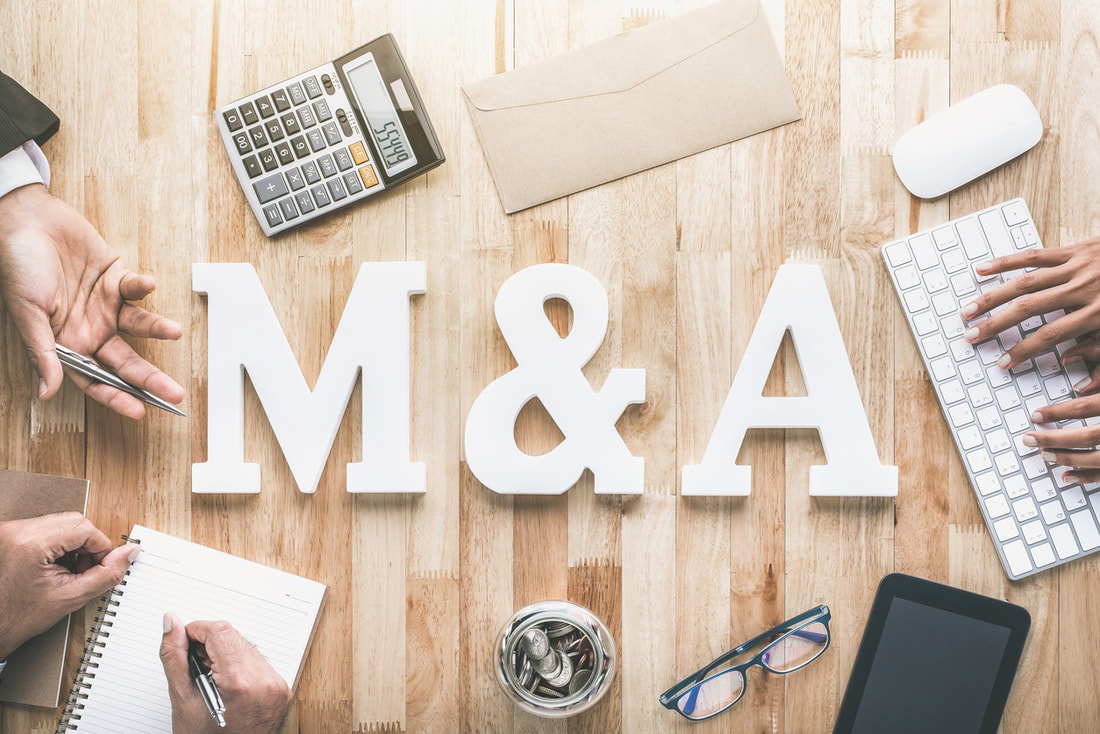
In your experience, what risks confront the typical buyer?
The buyer’s risk is very different than the seller’s. A buyer buys the future. “Past performance may not be indicative of future success.”
Articles in the Harvard Business Review since the 1950s have summarized the risk thus: With hindsight, most acquisitions – yes, most – fail to create value for the buyer’s shareholders. The parade of such articles in business publications continues. How can a buyer improve the odds?
The purpose of a successful acquisition is to create sustainable profit growth. First, a company should look for growth within its own business—new customers, new geographies, new versions of its products or services. That’s because the more you understand, the lower the risk of failure. But, if the desired growth is not available organically, it may be faster and cheaper to acquire.
Today’s M&A market is fully priced. To create incremental value, the buyer must 1) have a well-reasoned strategy, 2) understand the acquisition candidate, 3) buy at the right price and terms, and 4) successfully integrate or operate the acquired business.
In my experience, a successful acquisition begins with “know thyself” and a close understanding of the candidate’s strategic fit and value drivers. Jim Dunstan, CEO turned business professor at UVA’s Darden School, poses two questions: “Why do customers buy from us?” and “How do we make money in this business?” The buyer had better understand the answers to those questions for the acquisition candidate. It is better to overpay (a little) for the right business than to land a “bargain” that does not achieve strategic objectives.
When crafting an offer, many strategic buyers use the private-equity pricing model as their starting point, because that’s where competing offers from financial buyers should logically be. (How much can I borrow; plus, how much can I invest for a 25% rate of return?). To that value, they may add a bonus for synergy, depending on how important the candidate is to their plans, and how strong they perceive competition for the deal. A buyer may share some obvious synergy savings (like elimination of some administrative costs) if it must, but it will not disclose its unique “strategic” synergy. That is the buyer’s value-add, not the seller’s.
Many good acquisitions fail after they close. Why? Because they lack a disciplined plan to achieve the assumptions in the valuation model, or because due diligence was incomplete. If the transaction depends on closing a facility and moving the business into the buyer’s plant in six months, and it takes two years, the buyer will never see the forecasted return on investment.
By contrast, what risks confront the typical seller and is there a difference in the risk management approach for buyers and sellers?
The typical seller faces an important unfamiliar undertaking, so it is filled with risks. Two key risks are 1) timing of when to start the sale process and 2) who to entrust to advise on the process.
Most owners wait too long, not realizing it’ll take at least six months to close a sale. When they see the market softening, so will the buyer and the offers go down. The risk is that when the M&A window closes, it’ll likely take five years before fully favorable conditions return.
Timing depends on aligning three stars for a successful exit. I call them: Macro Star, Business Star and Owner Star.
Macro Star – Overall conditions in the hands of others: world markets, the U. S. economy and industry conditions M&A pricing fluctuates with supply versus demand for sellers, financing availability and economic outlook. In December 2017, it’s about as good as it gets.
Business Star – Attributes the owner can control or influence. To sell a business for the highest price and best terms, the owner needs to optimize and communicate the attributes that buyers are willing to pay a premium for:
- Corporate Clarity – A business they can understand, with a business model that conveys a sustainable competitive advantage;
- Profitability – operating profit as a percent of sales and as return on equity (to earn a premium, buyers want to see EBITDA (gross cash flow) margin above industry peers;
- Predictability – the ability to predict EBITDA credibly and the absence of financial surprises; and
- Growth – Steadily increasing EBITDA and profits over a five-year planning horizon
Owner Star – Includes controllable events like retirement and estate planning and non-controllable concerns like the owners’ health. Controllable events should be aligned with Macro Star and Business Star. To some extent, the owner can temper the impact of non-controllable events by techniques such as a leveraged refinancing to take chips off the table while continuing on.
As I mentioned, a well-run sale process normally takes six to nine months from the time an investment bank is engaged until closing. But pre-thinking how to get those stars in alignment could take a few weeks or a few years.
To minimize the risk that a sale is unsuccessful in hindsight, the owner needs to clearly define what the event should achieve. Certainly, a full, fair price is important – but what else? A customized role for the owner after closing? Protecting key employees or family in the business? Protecting the business’ reputation and service levels to customers?
Next, the owner needs to know what the business is worth, and the after-tax proceeds a transaction could generate, to see if personal, family and philanthropic objectives will be met. Needed is the amount a willing buyer would pay if the business was offered in a professionally-run auction process to an appropriate number of selected buyers. A valuation computes enterprise value (equity plus outstanding debt). In a transaction closing, the owner(s) pay off the debt and keep the cash. The owner’s tax advisor can compute the expected proceeds, based on enterprise value.
A competitive process generates the highest price, best terms and greatest likelihood of close at any given time.
The second key seller risk is overcome by picking fully capable advisors. The investment bankers advise and quarterback until closing, to keep the process moving forward – drafting the marketing materials, identifying 75 to 200 buyers with a strong reason to own the business, handling communications and negotiating issues with buyers. Criteria for selecting the investment bank typically includes: successful experience in advising similar businesses (industry expertise and size focus plus any specialized capabilities deemed important, such as cross-border experience or ESOPs), personality fit with the owner and his or her confidence in the firm’s negotiating ability.
Working with an experienced M&A transaction attorney increases your certainty of close and can shorten the process. A Tax Advisor and CPA usually round out the cadre of external advisors. The company’s CFO should be brought in early and other management team members will need to be involved. Consider taking care of these people with employment contracts, stay bonuses and such.
How has the M&A field (including divestures) evolved over the last 30 years?
Last month we talked about the rise of the financial buyer, and that certainly changed the landscape. In many middle market sectors, they account for a sizeable number of transactions.
I think strategic acquirers are being more disciplined in who they acquire and what they pay.
The volume of mergers and acquisitions is cyclical. I’ve survived downturns in about 1990, 2001 and of course 2008. I believe that will continue, although the low cost and wide availability of financing we are experiencing continues to favor a robust market.
You mentioned divestitures. Over the years, divestitures have become respectable, and necessary. Years ago, a divestiture might be seen as a past mistake, or that the company was in financial trouble. That’s no longer true. As Harvard’s Michael Porter says, “The essence of strategy is choosing what not to do.”
Corporate divestitures are increasingly being driven by companies’ strategies to focus on growth and shed non-core, low-growth assets, and less by financing needs. As the business focus changes, some assets are worth less to their current owners and more to others
There are two unique risks for the seller in a divestiture – reputational risk and ‘deep pockets’ risk, which can be as important to a large corporation as purchase price. Reputational damage occurs if the buyer mistreats employees or customers after closing. Deep pockets mean that because it is tempting to sue a large corporation, the terms, representations and warranties and indemnifications in the asset purchase agreement should be carefully negotiated before closing.
What are the risks in cross-border transactions?
Cross-border mergers and acquisitions have a layer of risks in addition to those in domestic transactions. They include unsuspected communication errors and hidden cultural differences leading to problems after closing (in addition to more recognizable language issues, currency risks and possible governmental upheavals).
For those reasons, an international initiative for a middle-market U.S. company typically begins with an export program, then an outpost in Toronto, and gradually moves into markets with increasing cultural differences and less modernity, such as Eastern Europe and Asia.
Globalization also opened middle-market North American companies owning a coveted customer base or unique intellectual property to a range of buyers from Europe, Asia and the Middle East. Today, a strong seller can expect to fetch attractive offers from selected overseas buyers, but thorough due diligence is a must.
How have organizations like The Association for Corporate Growth impacted M&A activity?
Every industry has a gathering place. For middle market M&A, The Association for Corporate Growth fills a key role in bringing buyers, financiers and advisors together. The organization has grown to 57 chapters in 11 countries serving more than 14,000 members of the M&A community.
I have fond memories of attending many an InterGrowth, ACG’s global conference held annually at a posh watering hole in a sunny place, where we rubbed (and bent) elbows with CEOs of fast-growing companies and other business, financial and governmental leaders.
When I was ACG President in 1995, Richard Teerlink, the accountant-biker CEO of Harley Davidson, won the growth award for an amazing turnaround and an early example of the resurgence in American manufacturing.
Speakers at InterGrowth tell great stories. My favorite was told years ago by Jim Balsillie, Co-CEO of Research in Motion (Blackberry). He was seated near Barbara and George Bush at a fancy dinner. Mrs. Bush told him George was addicted to his Blackberry, so Jim confessed that his wife had a rule that he had to leave his on the foyer table when he came home. One night, he snuck it into his pocket, and went upstairs to read his little daughter a bedtime story. The unseen phone buzzed just before his wife came into the room. Their daughter said, “Daddy just farted.” “Now I had a dilemma,” said Jim, “do I confess to the Blackberry or the fart?” With that, President Bush laughed so hard he sprayed Cabernet Sauvignon all over the tablecloth.


 RSS Feed
RSS Feed